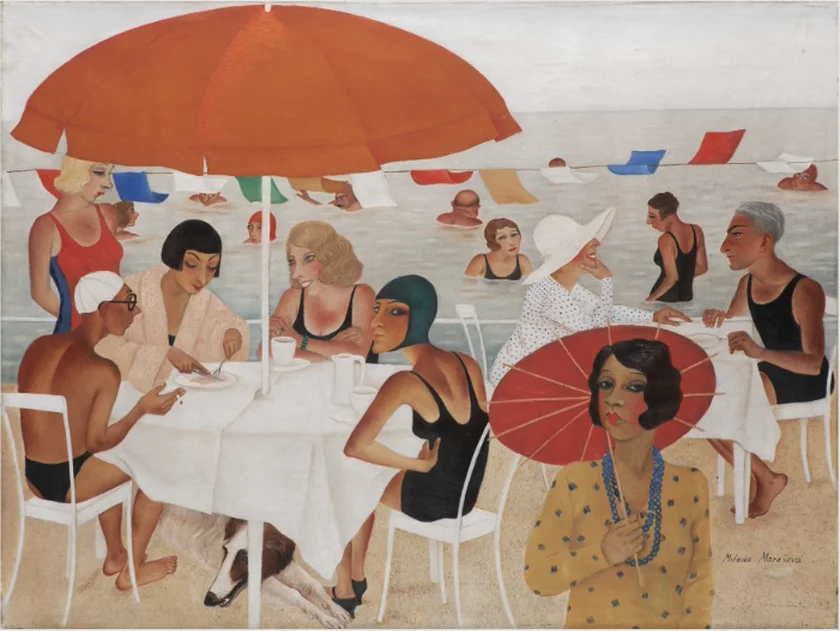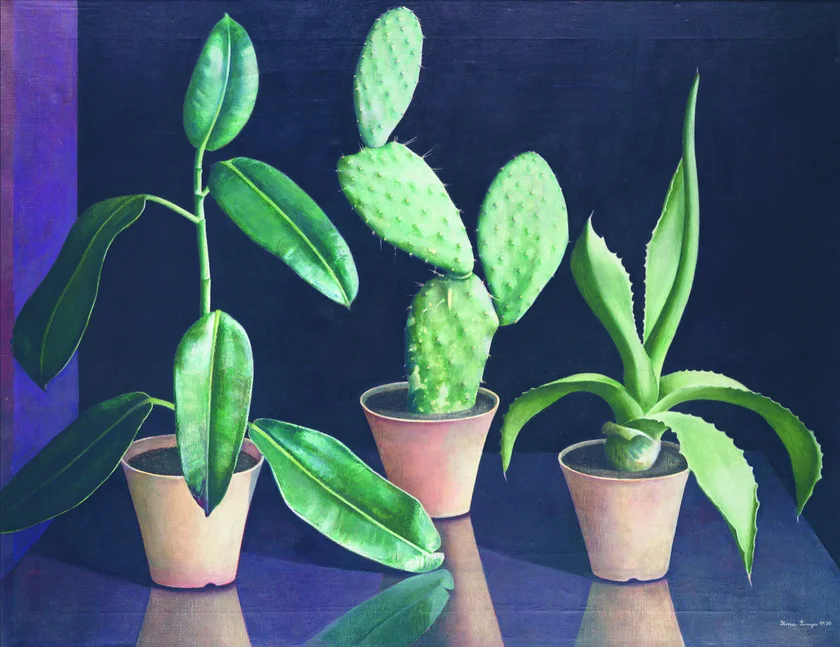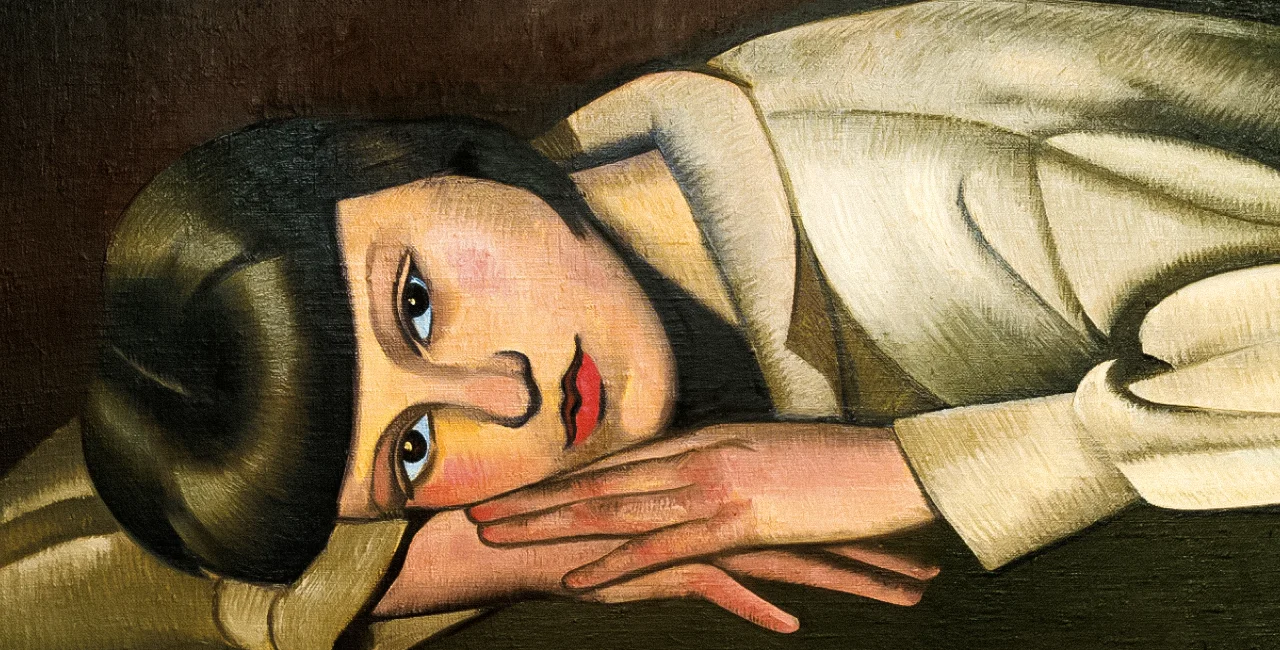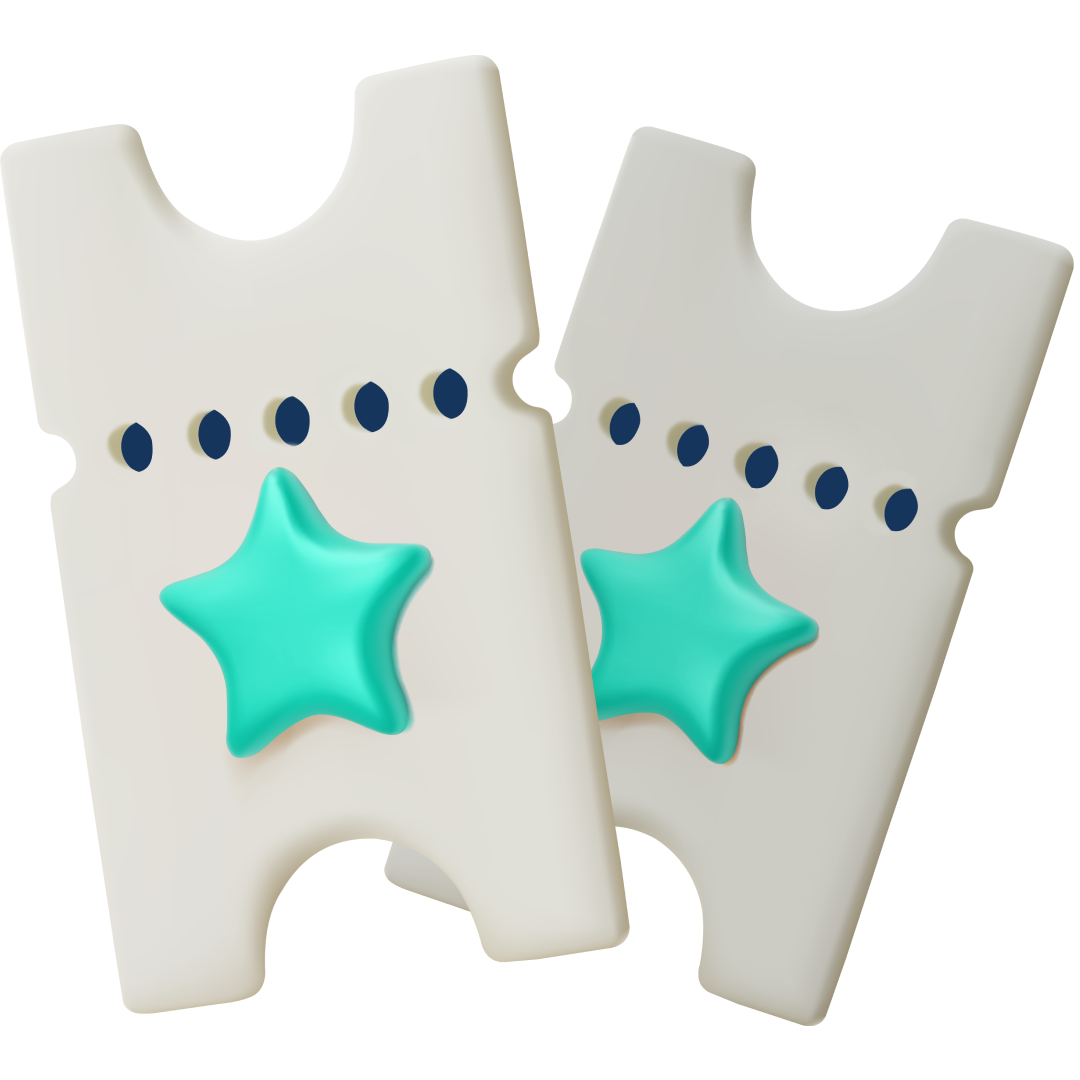A new exhibition at Prague City Gallery (GHMP) showcases the daily lives of the people of Czechoslovakia during the interwar period. The exhibition features more than 300 works of art depicting a simple yet modern lifestyle driven by technological advancements, travel, communication, and entertainment between 1918 and 1945.
The works in New Realisms, featuring well-known artists such as Karel Čapek, Josef Sudek, and Otto Gutfreund, as well as works by lesser-known painters such as Ilona Singer, depict both the joys and the downsides of life in the city and countryside. The exhibit also showcases the prescient topics of women’s emancipation, ethnic minorities, fashion, and technology via paintings, sculptures, photographs, films, and advertising.
“The exhibition is unique not only in its new perspective on the interwar era of Czechoslovakia but also in the range and composition of the works. For the very first time, realistic paintings and photographs, as well as film, sculptures, and advertising from this period, meet side by side,” said curator Anna Habánová who, together with colleagues Ivo Habán and Helena Musilová, worked for over two years on the large-scale exhibit displaying works by more than 100 artists.
-GHMP curatorsThe geopolitical background of our territory was incredibly complex. Several ethnicities and nationalities lived in one state
Art created by modern realists in interwar Czechoslovakia responded to social progress by the middle class while highlighting issues resulting from economic division. These works showed radical transformations in daily life due to technology, travel, communication, and entertainment. Artists portrayed both urban and rural life in this context.
Emancipated women and cacti
The exhibition takes visitors through fifteen themed rooms, each bringing a different perspective to the period’s art.
A room themed around the transformation of lifestyles, primarily through the portrayal of women, captures the essence of the 1920s woman, depicted drinking alone in cafes and saloons, showcasing their hairstyles, clothing, makeup, and confidence.

This is complemented by a film on loan from the National Film Archive, From Saturday to Sunday, directed by Gustav Machatý in 1931, in which two young women seek an escape from their monotonous office work and go out on Saturday nights to seduce men.
One of the most remarkable pieces in the exhibition is a painting titled Still Life with Cacti by Jewish artist Ilona Singer. Singer painted the plants in a timeless manner that would fit perfectly in today’s modern living space. Houseplants commonly found in middle-class living rooms were frequently featured in women’s magazines of the day.

Photos by well-known photographers like Alexander Hackenschmied and Josef Sudek accompanied many articles – visitors can even flip through these publications, which represent a turning point for photography, which began to pay attention to sharpness, novelty of view, and focus on the subject. Josef Sudek’s photographs of Ladislav Sutnar’s beverage services are particularly famous.
Čapek's earliest photographic works
Karel Čapek, an avid cactus enthusiast, was also a passionate amateur photographer. A room dedicated to the Czech author reveals Čapek’s very first photos and photos from his book Dášeňka čili život štěpnie (Dášeňka or the Life of a Puppy), one of the fundamental photographic publications of the early 1930s.
In addition to Josef Sudek and Karel Čapek, visitors will also see works by well-known Czech artists, including Jan Zrzavý, Otto Gutfreund, and František Muzika. Visitors will also see works by the Silesian painter Paul Gebauer, Sándor Bortnyik, and Gejza Schiller, active in Košice, the photographer Irena Blühová, Otto Dix’s student Erika Streit, and many others.
The uniqueness of the New Realisms exhibition lies in the presentation of Czech, Slovak, German, and Hungarian-speaking artists in one exhibition space. Although separated by language and hundreds of kilometers, their parallel responses to everyday stimuli and their vision were similar.
The New Realisms exhibition is at the GHMP from March 27 to August 25. Offering a new perspective on visual culture and art between 1918 and 1945, the exhibit features 313 works of art. The exhibit is located on the second floor of the Municipal Library in Prague.












 Reading time: 3 minutes
Reading time: 3 minutes 




















